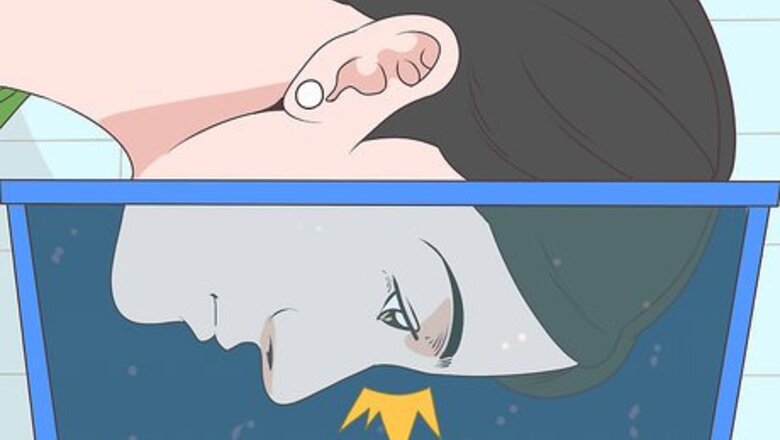
views
Removing the Object
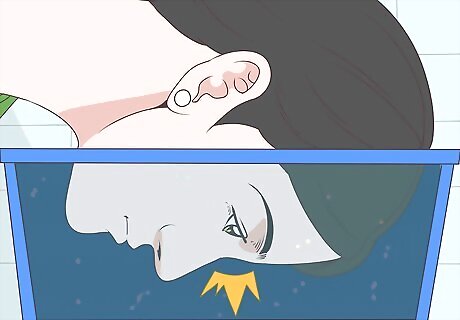
Use a bowl of eyewash. Administration of eye wash from a bowl is a good method for flushing eyes that have possibly been exposed to a contaminant, or if a foreign particle is lodged in eye. Submerge your face in the bowl of water. Open and rotate your eyes to ensure the whole surface of the eye comes into contact with the water. Rotate eyes in a circular pattern to help get the water in your eye. This will help remove contaminants. Remove your face from the water, then blink a few times to ensure that your eye gets an even coating of water. Partially fill a bowl with sterile eyewash solution or lukewarm water between 60°F to 100°F (15.6 °C to 37.7 °C)in temperature. Do not fill the bowl to its brim as this will cause water to spill over. You can also put the water in a squeeze bottle and use that to flush out your eyes.
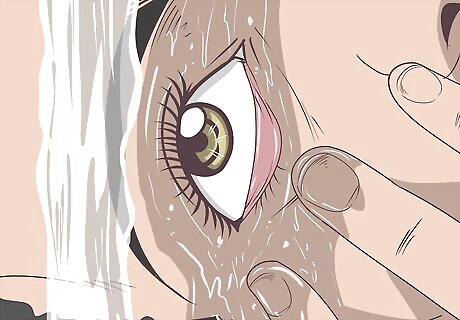
Use tap water. If you are unable to make or access a sterile eyewash, you can use ordinary tap water. This isn't ideal, but is often a better option than waiting to get or make eyewash. This method is especially appropriate if there is something painful or toxic in your eye. Splash water into your open eyes as generously as you can. If your sink has an adjustable faucet, point it directly into your eye. Set it at a low pressure and a lukewarm temperature and hold your eyes open with your fingers. Tap water isn't ideal for eye washing. It's not as sterile as the purified water used in many laboratories. But, if you get something toxic in your eye, it's far more important to rinse the chemicals away than to worry about possible infections. Water doesn't neutralize many chemicals. It just dilutes them and washes them away. For this reason, you'll need a large amount. The volume of wash should be at least 1.5 liters per minute (0.4 gallons per minute) for 15 minutes.
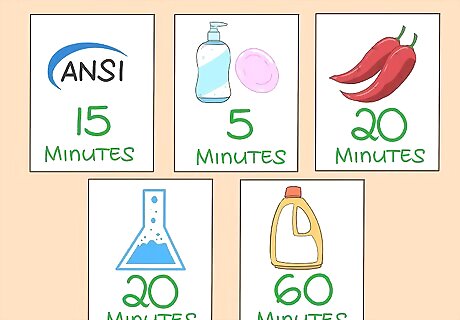
Make sure to flush your eye for the right amount of time. Regardless of which approach you use to flush out your eye, there are some important guidelines to keep in mind about how long to wash. The American National Standards Institute (ANSI) recommends flushing your eyes with water for at least fifteen minutes. For mildly irritating chemicals, like hand soap or shampoo, rinse for a minimum of five minutes. For moderate-to-severe irritants, like hot peppers, rinse for at least 20 minutes. For non-penetrating corrosives such as acids, rinse for at least 20 minutes. An example of an acid is battery acid. Afterwards, call poison control and seek medical attention. For penetrating corrosives such as alkalis, rinse for at least 60 minutes. Drain cleaner, bleach, ammonia, for example, are common household alkalis. Call poison control and seek medical attention.
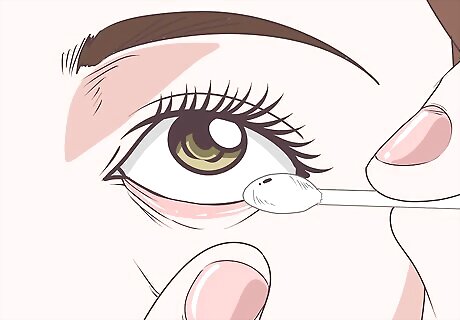
Wipe with a cotton swab. You can use a cotton swab to remove any object or substance that moves out of your eyeball while flushing. If the foreign object is no longer on the eye itself, it's okay to try to wipe it away. Be careful not to wipe the eye itself with a cotton swab. The safest thing to do is to flush your eye with water, not try to scrape the object away with a swab.
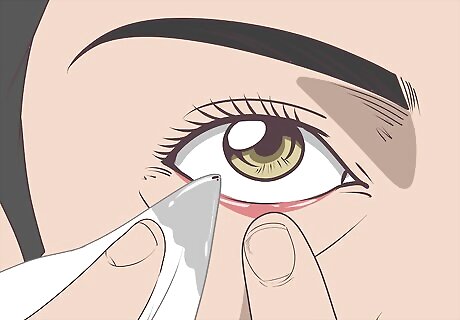
Use a tissue. You can also remove an object from the white of the eye with a wet piece of tissue. If you see an object on the white of your eye or inside an eyelid, wet a tissue and touch the end of it directly to the object you want to remove. The object should adhere to the tissue paper. This method is less recommended than flushing your eye with water. It will cause some irritation on your eye. This is common and not a cause for worry.
Making an Eyewash
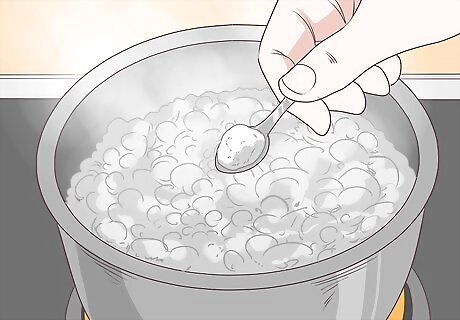
Combine boiling water and salt. There are many commercially available eye washes that are ideal for removing objects from your eye. But if you don't have one on hand, you can make your own. The base of the mixture is salt and clean water. Boil some water. Let it reach a full rolling boil and hold it at that temperature for one minute. Then, add one teaspoon of ordinary table salt for each cup of water. If possible, it's better to use sterile, purified water rather than ordinary tap water. Tap water can contain more bacteria and additives than sterile water. The goal of an improvised eye wash is to mimic the chemical composition of tears. The closer your solution is to the natural salt concentration (salinity) of your tears, the lesser the shock to your eyes. Tears are usually less than 1% salt by weight. If you don't want to make your own eyewash, you can use a sterile saline solution.
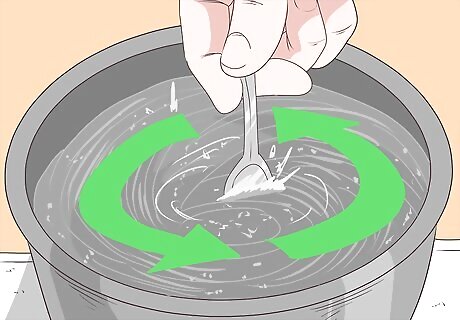
Mix well. Stir your mixture with a clean spoon to ensure the salt that you've added is well-dissolved. Stir until you no longer see solid salt grains at the bottom of the pot. Since the water is boiling and you've added a relatively small amount of salt, it shouldn't take much stirring to dissolve it completely.
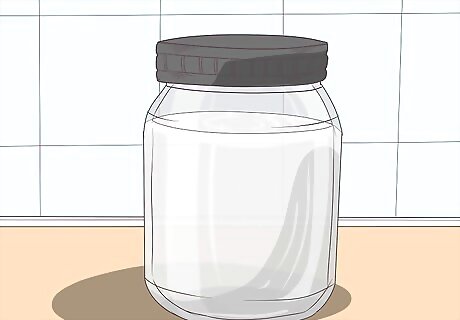
Let it cool. Place your solution in a covered container and allow it to cool. When the solution reaches room temperature (or lower) it's ready for use. Never, ever use an eyewash that's still hot. You can seriously injure or even blind yourself by burning your eyes with hot water. Cover the solution while it's cooling to ensure no new contaminants can get in. Keeping the solution cool can give it a refreshing effect when you use it. But, don't use an ice-cold eye wash or one less than 60°F (15.6 °C). It can be painful and even slightly damaging to your eyes. Even if you take extra care to keep your solution clean, be sure to throw it out after a day or two. Bacteria can be re-introduced to a solution after boiling.
Inspecting Your Eye
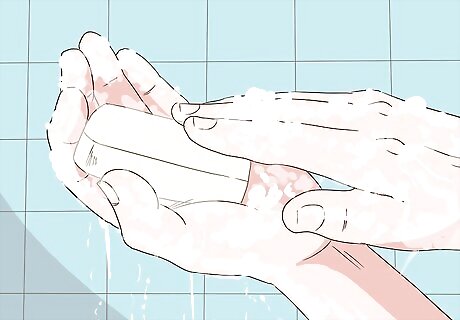
Wash your hands. Even if your hands don't seem dirty, it's important to wash them if you're going to touch your eye. You don't want to remove an object from your eye only to infect it with something worse. Wash your hands thoroughly with soap and clean water for at least 20 seconds. This ensures that you don't get bacteria or other contaminants in your eyes. Eyes are quite vulnerable to damage and infection. Make sure you rinse all the soap off your hands so you don't get it in your eye.
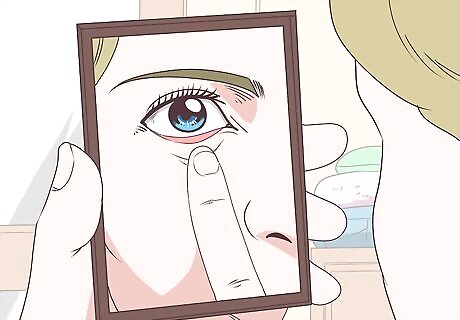
Locate the object in your eye. Move your eye back and forth to locate where the object is. Move your eye from left to right, as well as from top to bottom. You may be able to see or feel the object. Looking in a mirror may be helpful if you can't tell exactly where the object is. A bright light will help shed some light on the situation. Use it to make your inspection easier. Turn your head left and right and tip it up and down to move your eye while looking at it in a mirror
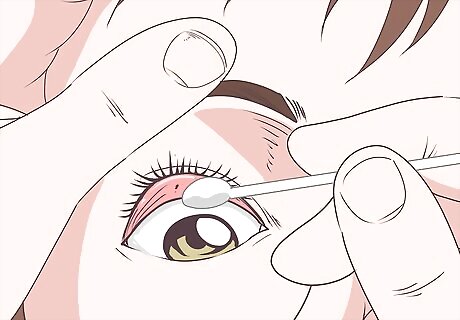
Get help. Have a friend or family member do the inspection for you if you are having trouble. Pull your own eyelid down and look up, slowly enough that the inspector has a chance to examine your eye. If this doesn't reveal the object, repeat, this time pulling your eyelid up and looking down to allow for inspection of your upper eye. Do your best to stay still and not struggle as the person is helping you. To examine underneath the eyelid, place a cotton swab right above the upper eyelid. Flip the lid over the cotton swab. This will allow you look for any object lodged in the eyelid itself.
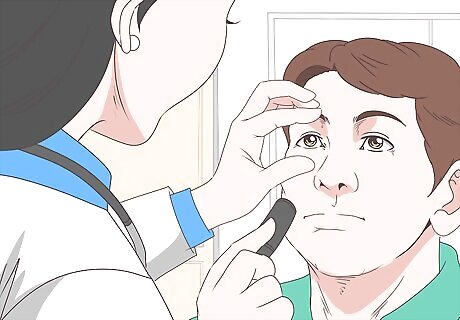
Get professional help. If you can't locate the object or can't remove it, call a doctor. Seek medical attention right away if you experience any of the following: You cannot remove the item from your eye The item is embedded inside your eye You experience abnormal vision Pain, redness, or discomfort continues after removal of the object from the eye
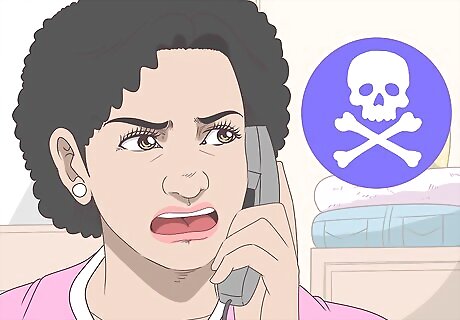
Call poison control. It is possible to get a toxic substance in your eye. This can have very serious health consequences. Call poison control at (800) 222-1222 and seek medical attention immediately if you experience any of the following: Nausea or vomiting Headaches or lightheadedness Double vision or impaired vision Dizziness or loss of consciousness Rashes or fever
Treating Your Eye Afterward
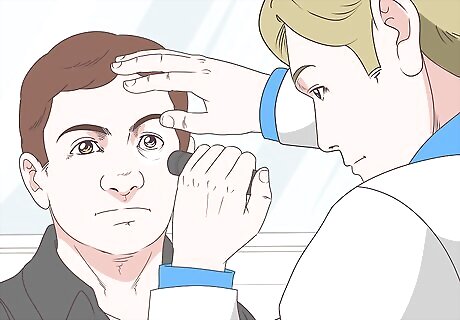
Expect some minor discomfort. It's common to feel a scratchiness or discomfort in your eye after you have removed the offending object. If you continue to feel discomfort for more than a day after removing the object, consult a physician.
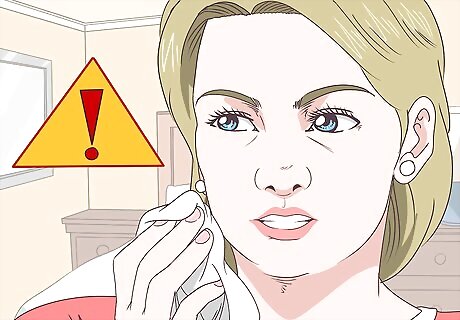
Take precautions to help recovery. There are many precautionary measures to protect eye during the recovery process. These include: Alerting and informing an eye care professional if new symptoms arise or if pain becomes unbearable Following the advice of your eye care professional, if you consulted one Protecting eyes from ultraviolet light or bright light by wearing sunglasses when outdoors Avoiding the use of contact lenses until your eye has healed Avoiding hand exposure to eye area and washing hands before touching eye area Taking all prescribed medication as advised by your physician (he may prescribe an NSAID for the pain or antibiotics if you wear contacts, as this can make you susceptible to infection)
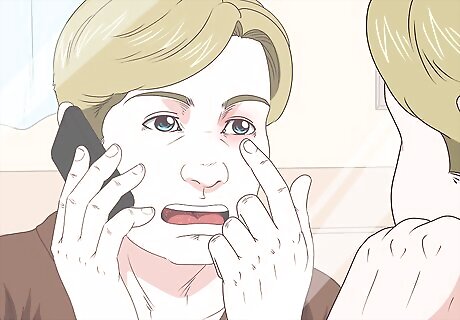
Continue to monitor the situation. If the situation gets better, no further action is necessary. If the situation gets worse, see an eye-care professional. Here are the signs to be on the lookout for after removing an item from your eye:: Blurred or double vision Pain that continues or increases Blood that covers part of the iris (or colored part of the eye) Sensitivity to light Other signs of infection such as discharge, redness, sores around the eye, or a fever




















Comments
0 comment